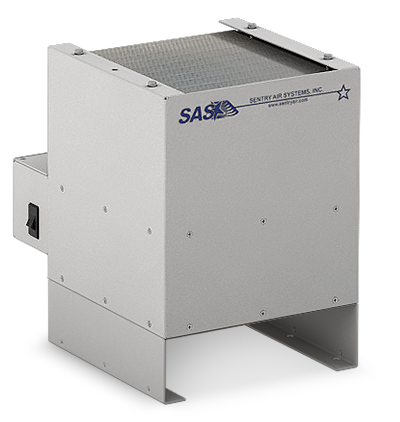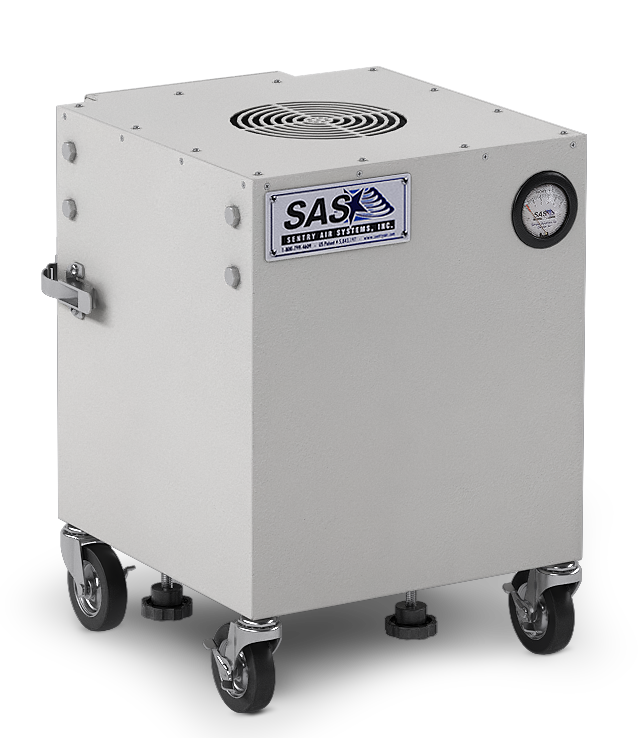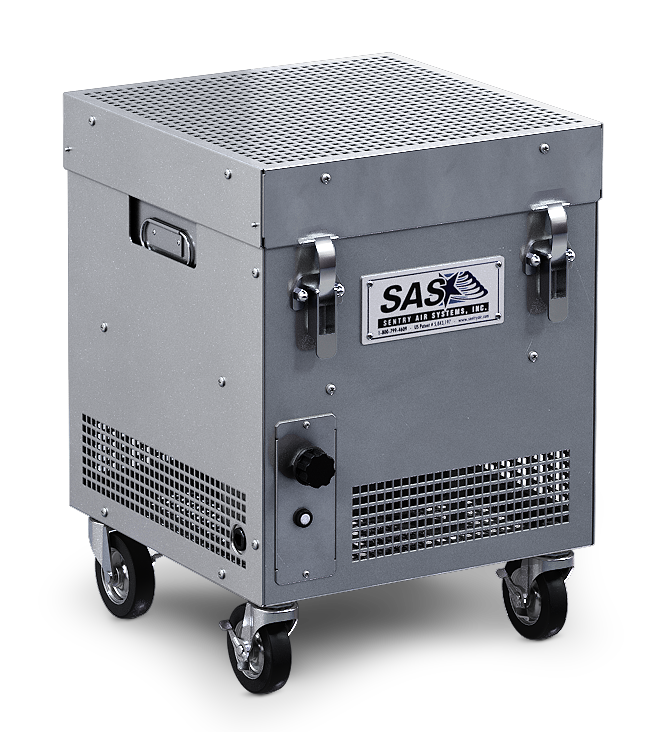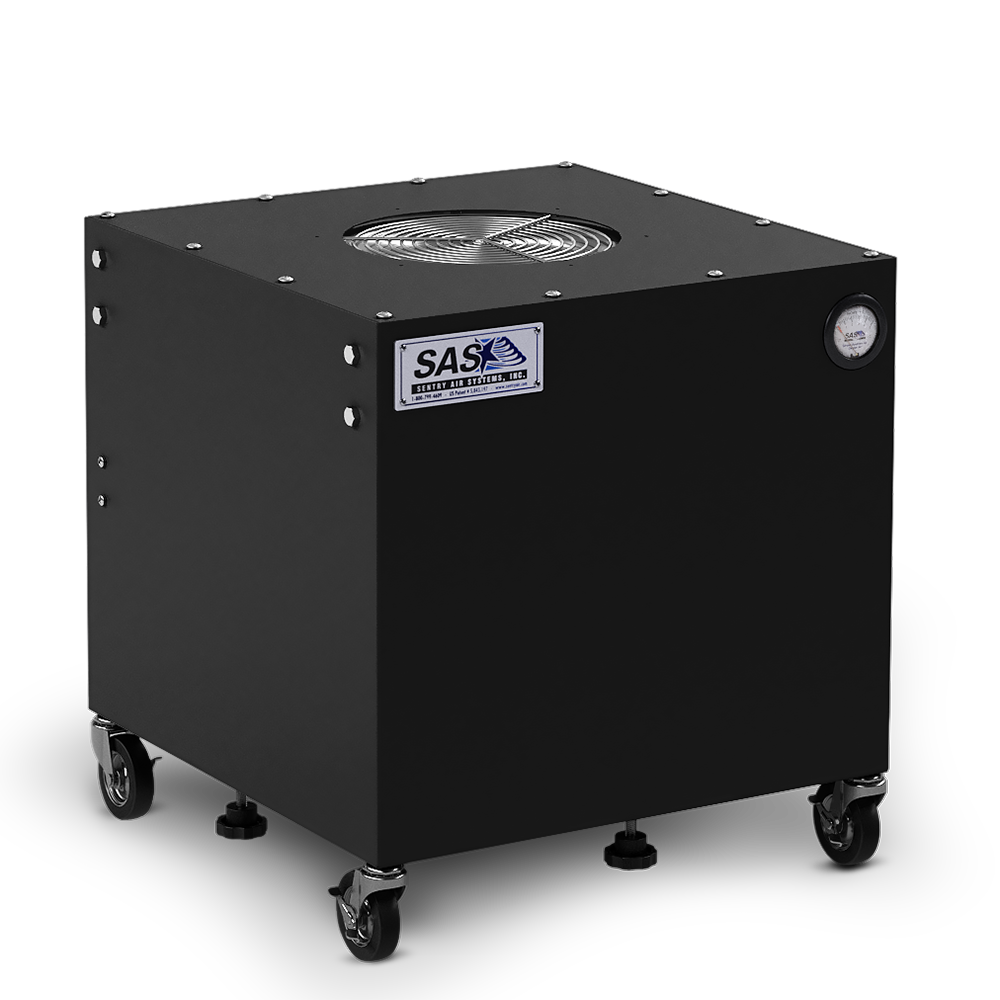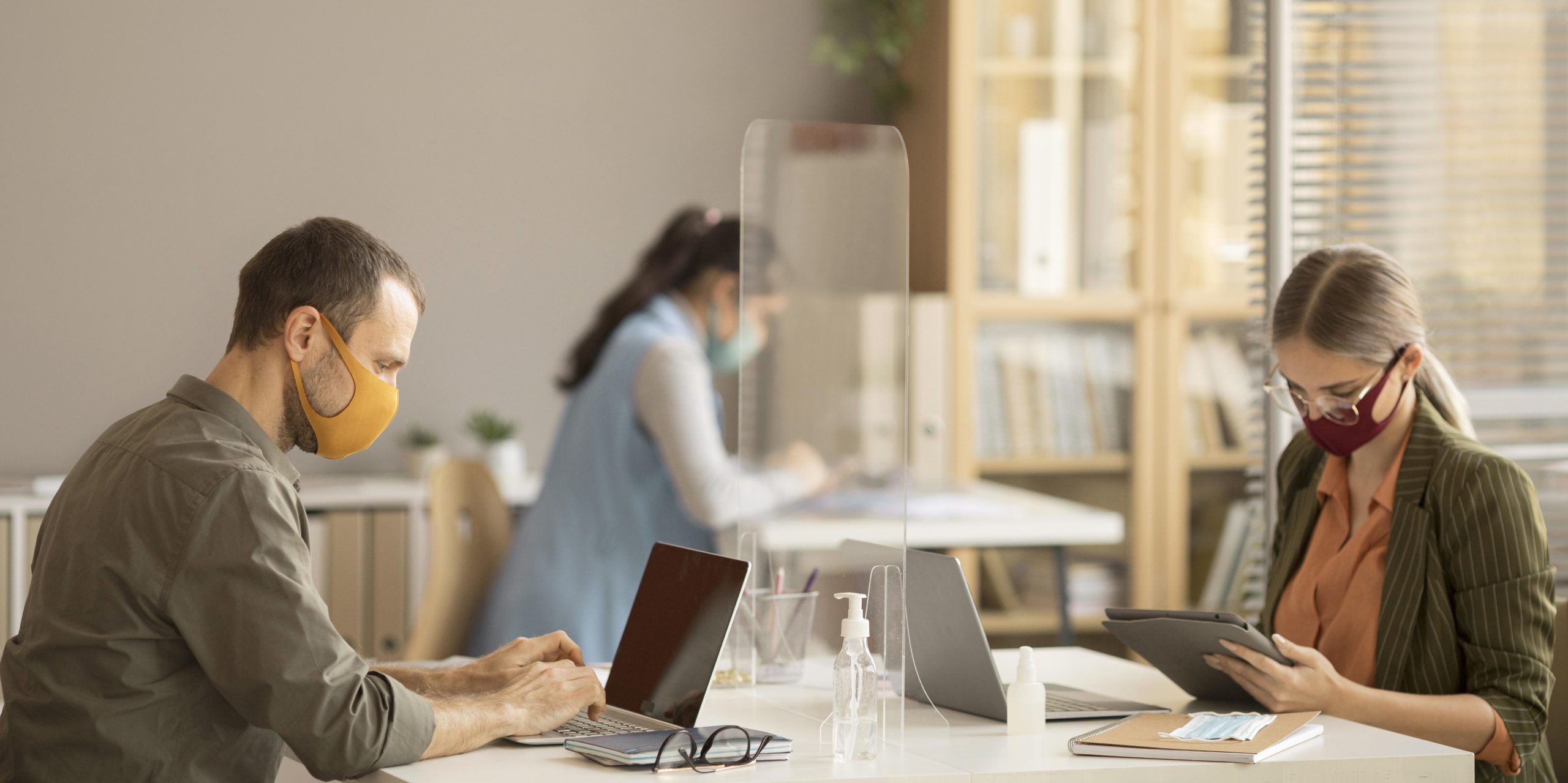
Wearing masks and improving a building’s ventilation and air filtration are parts of a multi-layered approach to reducing transmission of COVID-19 in the workplace. (Source)
After two years of working from home, many companies have started searching for ways to get back to work while still protecting employees from COVID. The Center for Disease Control and Prevention (CDC) recommends utilizing a multi-layered protection approach including masks, social distancing, hand hygiene, vaccination, and improving the building’s ventilation (Ref. 1). Using ventilation and air filtration as a COVID prevention method enables the workforce to go back to the office rather than restrict them. Proper ventilation in combination with other methods can help provide a safe space for collaboration.
What is Ventilation?
Ventilation occurs when purposely introducing clean air into a space to create an airflow and remove stale air (Ref. 2). Ventilation helps ensure that indoor air is healthy to breathe by diluting indoor pollutants and other airborne contaminants. The three types of ventilation are:
1. Natural – uses outdoor air through windows and fans
2. Mechanical – building’s HVAC system and filters (if applicable)
3. Supplemental – portable HEPA air cleaners for high traffic and unventilated areas
How Does Ventilation Work to Help Prevent COVID?
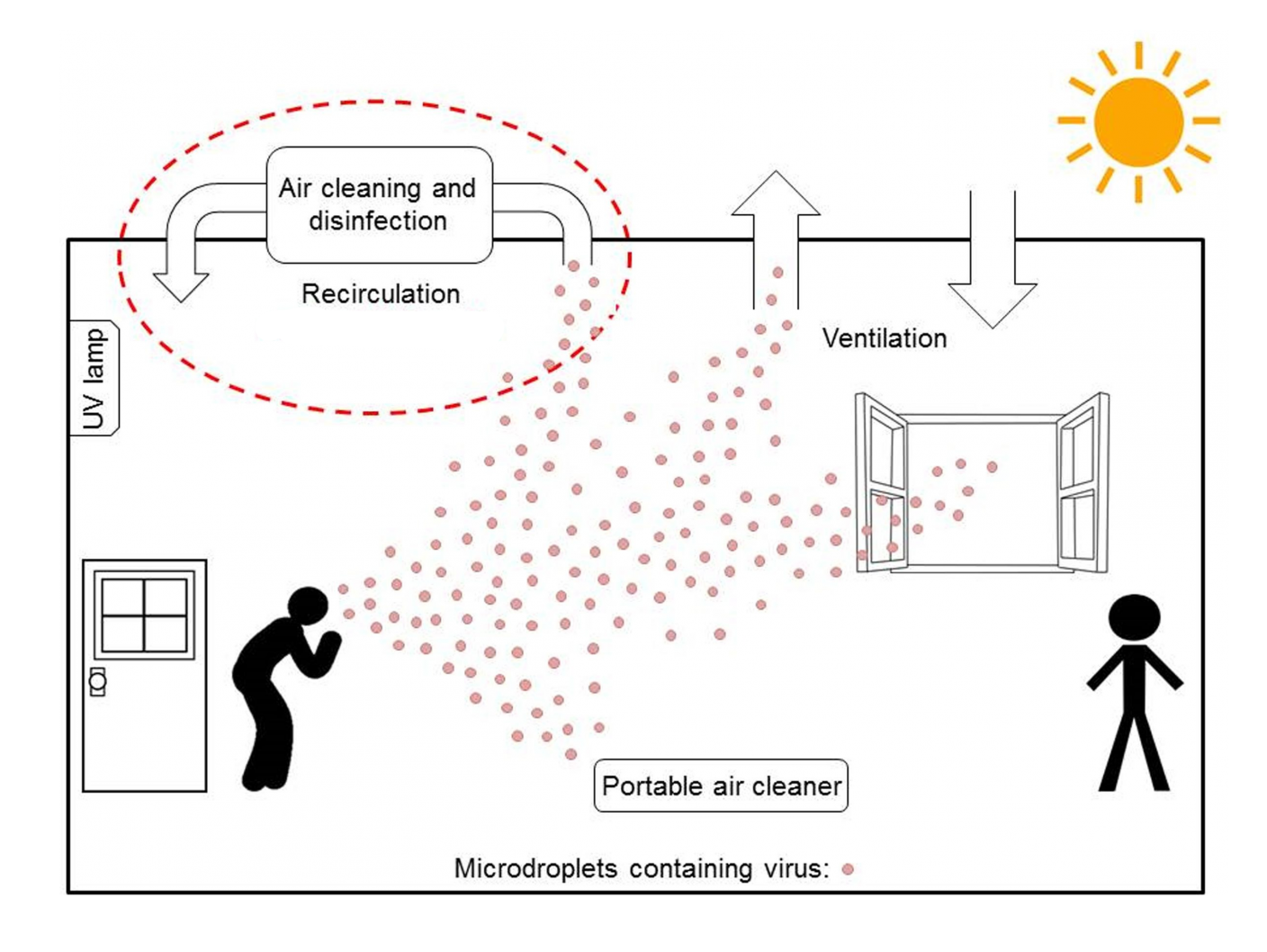
Visual illustration of building ventilation. (Source)
Ventilation helps to prevent COVID by increasing the amount of fresh or filtered air to reduce the airborne viral concentration (Ref. 1). Ventilation with outdoor air, the preferred method, rids the air of virus particles but is not always feasible due to heating/cooling costs and building design (Ref. 3). Recirculating air only reduces the chance of COVID transmission if the air goes through a MERV 13 filter or greater to remove viral particles (Ref. 3).
HEPA filters (MERV 17) can be effective at filtering out most COVID viral particles and airborne aerosol (Ref. 1). SARS-CoV-2 (the virus that causes COVID-19) spreads through aerosols in the air by attaching to respiratory droplets resulting in a larger aerosol size (about 5 µm) making it easier to filter compared to the virus particle alone (about 0.1 µm). HEPA filters offer 99.97% efficiency on particles 0.3 µm (the most penetrating size) but provide higher efficiency on particles both larger and smaller (Ref. 1).
In a controlled simulated conference room study, researchers found the use of HEPA air cleaners to significantly reduce airborne particles from a simulated COVID infected person (Ref. 4). The HEPA Air Cleaners offered the most protection when placed near the aerosol source in the center of the room. In the study, HEPA Air Cleaners reduced aerosol exposure by 65%, masks reduced exposure by 72%, and both methods together reduced exposure by 90% (Ref. 4).
Expert Recommendations for Improving Ventilation
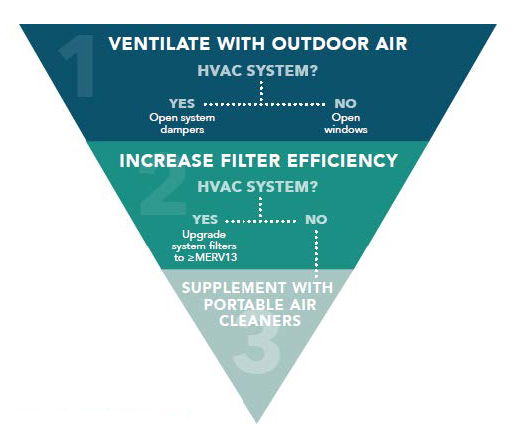
Prioritization of Engineering Controls to Reduce Long-Range Airborne Transmission (Source)
Building administrators should focus on the three types of ventilation when creating ventilation improvement plans. The chart to the left summarizes the initial considerations to improve a building’s ventilation (Ref. 5). The American Society of Heating, Refrigerating, and Air Conditioning (ASHRAE) released the following as best practices for improving building ventilation (Ref. 1).
• Increase the amount of outdoor air (if possible) with open windows and use fans to improve the circulation of the outdoor air.
• Ensure ventilation systems work properly including checking vents for blockage and improving the airflow on an HVAC system.
• Continuously run the HVAC system fan.
• Install MERV 13 or better filters in HVAC if the system’s airflow can handle it (Ref. 5).
• Run the HVAC system for 2 hours before people arrive and 1 hour after (Ref. 3).
• Supplement with HEPA (MERV 17) Air Cleaners or UV Air Cleaners to reach the optimal air changes per hour. This solution works well for interior rooms and in buildings with limited HVAC modifications available.
Air Exchange Rates
Air changes per hour (ACH) measures the ventilation of a room by describing how often the air is completely replaced per hour (Ref. 3). WHO recommends 6 ACH meaning the air changes every 10 minutes (Ref. 6). Other organizations agree that 4-6 air changes per hour are ideal for reducing disease transmission. There is no law-mandated minimum ACH for buildings but the higher the ACH the more protection from disease transmission. The chart below from MAD+ Policy Guide outlines the relative risk reduction associated with the number of air changes per hour (Ref. 7). From the chart, 4.5 ACH results in 90% risk reduction and 95% from 6 ACH.
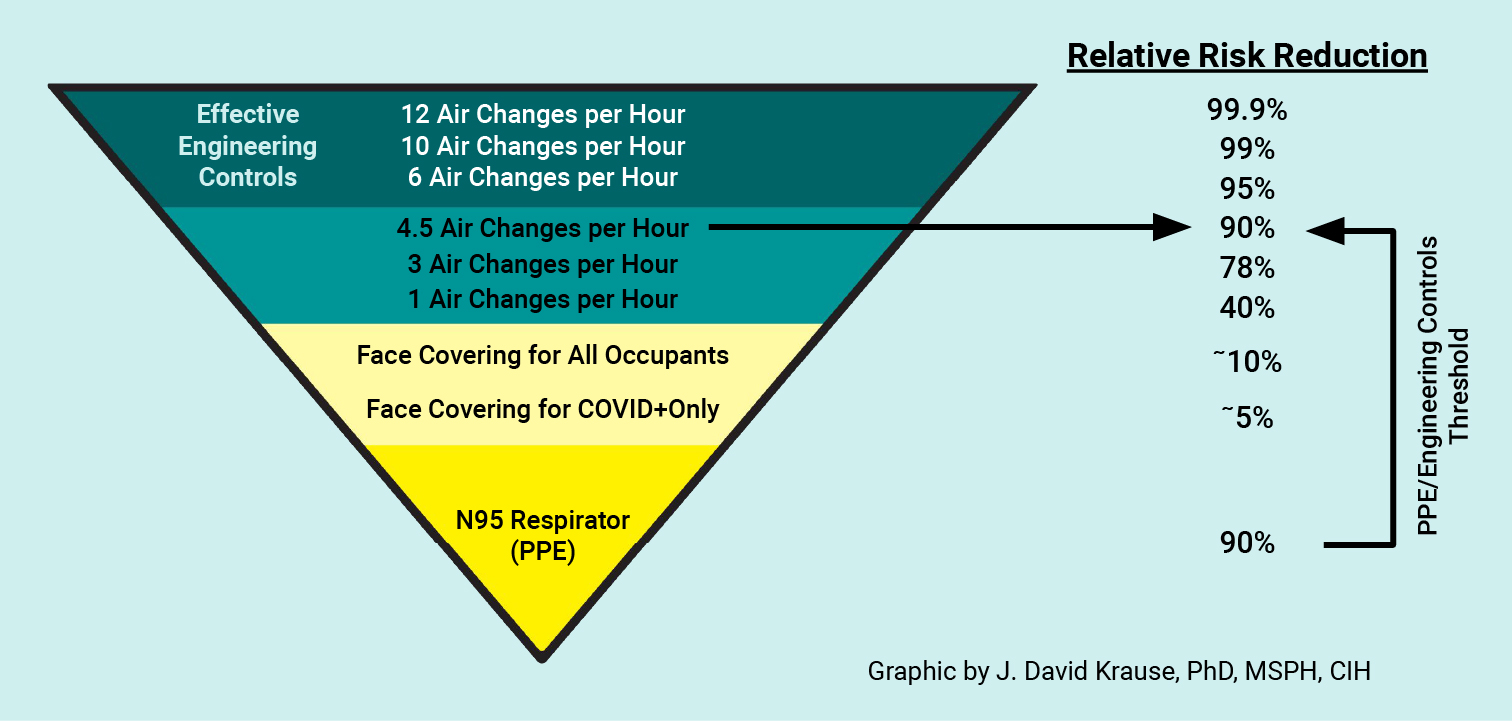
Relative Risk Reduction by Air Changes per Hour (Source)
For HEPA filtered air cleaners, the cubic feet per minute and the room size determine the air changes per hour. The ACH can be calculated with the following formula (Ref. 3):

To calculate the minimum CFM required for 5 ACH in an 8’ tall room use this formula (Ref. 1):

HEPA Air Cleaners
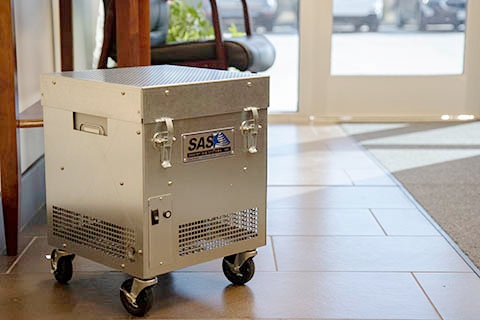
Model 300 Air Guardian provides air filtration in high traffic areas to help reduce disease transmission.
HEPA Air Cleaners provide supplemental ventilation for areas with poor air circulation, high traffic, and without windows. Dr. Fauci recommends utilizing HEPA Air Cleaners to supplement ventilation and lower the risk of COVID transmission (Ref. 8). HEPA Air Cleaners must be sized properly for the room to offer optimal ACH and protection (Ref. 3). These systems should have regular filter changes and be placed in the center of the room to improve the airflow (Ref. 3). HEPA filters provide up to 99.97% efficiency on particles 0.3 microns and larger. For additional air filtration, Air Cleaners can use ULPA filters which offer up to 99.9995% efficiency on particles 0.12 microns and larger. Sentry Air Systems can work with you to help properly size air cleaners for your workspaces.
Using ACH formulas, the room square footage has been calculated for each of our systems to provide 4, 5, or 6 ACH.
Recommended Room Size for Sentry Air Systems Air Cleaners by Air Changes per Hour
| Part # | CFM | 4 ACH | 5 ACH | 4 ACH |
| SS-200-PRAC | 100 | 187.5 | 150 | 125 |
| SS-300-PRAC | 350 | 656.3 | 525 | 437.5 |
| SS-300-AG | 365 | 684.4 | 547.5 | 456.3 |
| SS-400-PRAC | 700 | 1,312.5 | 1,050 | 875 |
| SS-450-PRAC | 950 | 1,781.3 | 1,425 | 1,187.5 |
| SS-700-FH | 700 | 1,443.8 | 1,155 | 962.5 |
Portable HEPA Air Cleaners
Portable HEPA Air Cleaners assist in providing optimal air cleaning for offices, medium-sized shared workspaces, conference rooms, and more. These systems offer powerful air filtration in a compact and energy-efficient package. At Sentry Air, we offer a variety of Portable HEPA Air Cleaners compared below.
Industrial HEPA Air Cleaners
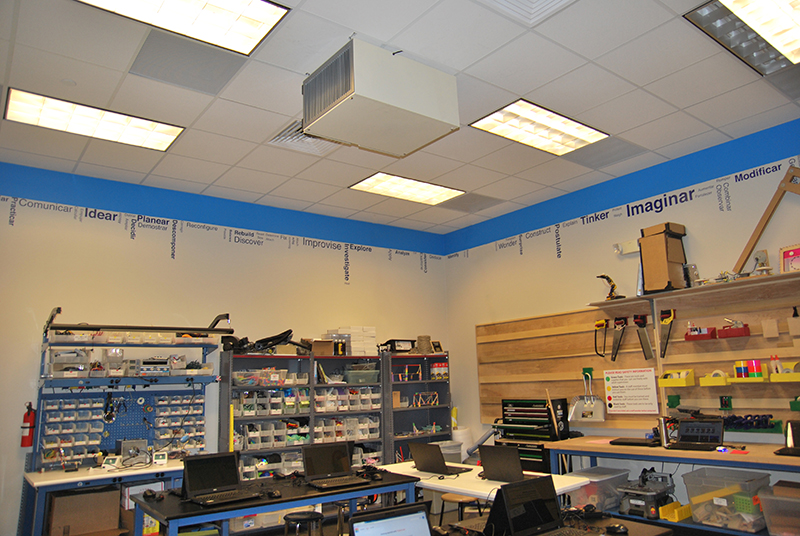
Model 700 Free Hanging Air Cleaner is a great choice for large rooms and workspaces.
Industrial HEPA Air Cleaners, such as the Model 700 Air Cleaner, help provide powerful air filtration for larger spaces such as warehouses, large meeting rooms, large shared workspaces, and more. The Model 700 Air Cleaner offers multiple mounting methods such as hanging from the ceiling and mounting on a wall, a shelf, or a table.
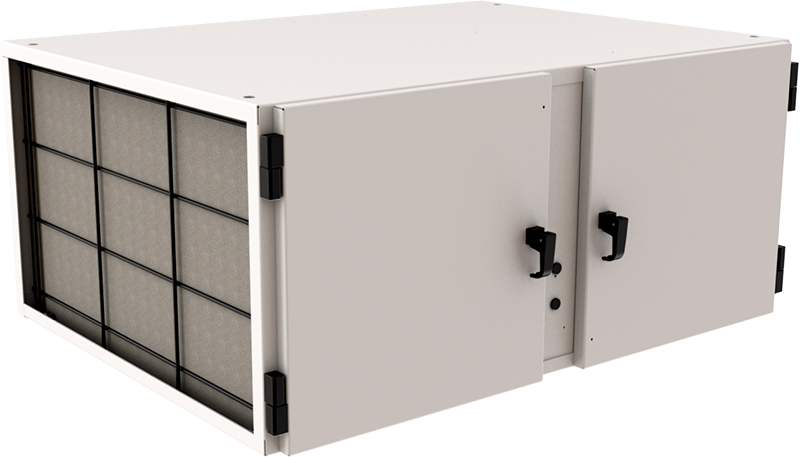 SS-700-FH |
|
| CFM | Up to 770 CFM |
| Size (L x W x H) |
32.625” x 24.75” x 14.5” |
| Sound Level | 71 dba |
| Construction | Carbon Steel |
| Filters | Pre-Filter, 2 Main Filters, and Post-Filter Main Filters: HEPA or ASHRAE |
UVC Air Cleaners
UVC Air Cleaners incorporate the use of UVC light. These systems utilize the proven germicidal wavelength of 253.7 nm to deactivate bacteria, viruses, or other microorganisms (Ref. 9). For viruses, this means that the virus can no longer reproduce and spread.
Portable UVC Air Cleaners
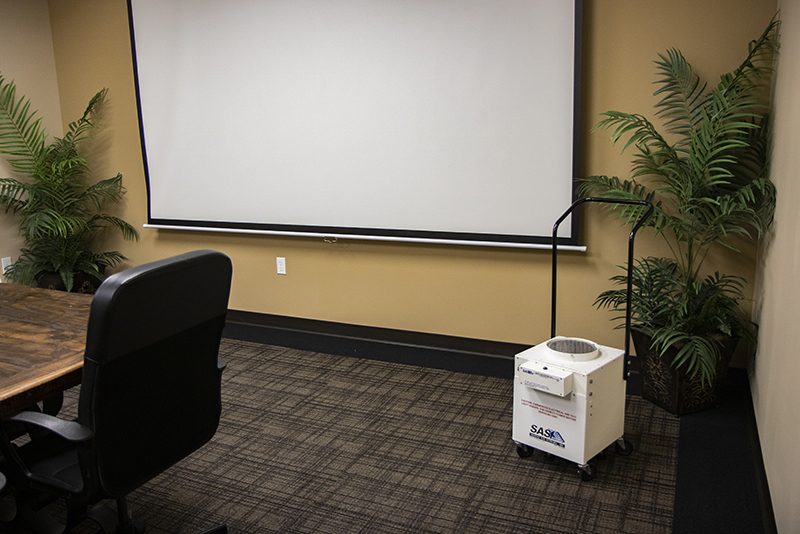
Model 300 Portable UVC Air Cleaner helps provide
additional protection from disease transmission in
conference rooms, shared workspaces, waiting rooms, and more.
Portable UVC Air Cleaners aid in providing additional protection with the use of UVC light to deactivate microorganisms and viruses. The Model 300 UVC Air Cleaner uses UVC light technology to cleanse the filter within the system after use. For best results, at the end of the day or period, the operator would turn off the fan and start the UVC filter disinfection process where the system exposes the filter to UVC light for 30 minutes. Safety precautions require the operator to leave the room during the UVC cycle. This compact and portable unit provides powerful air filtration for waiting rooms, conference rooms, shared workspaces, and more.
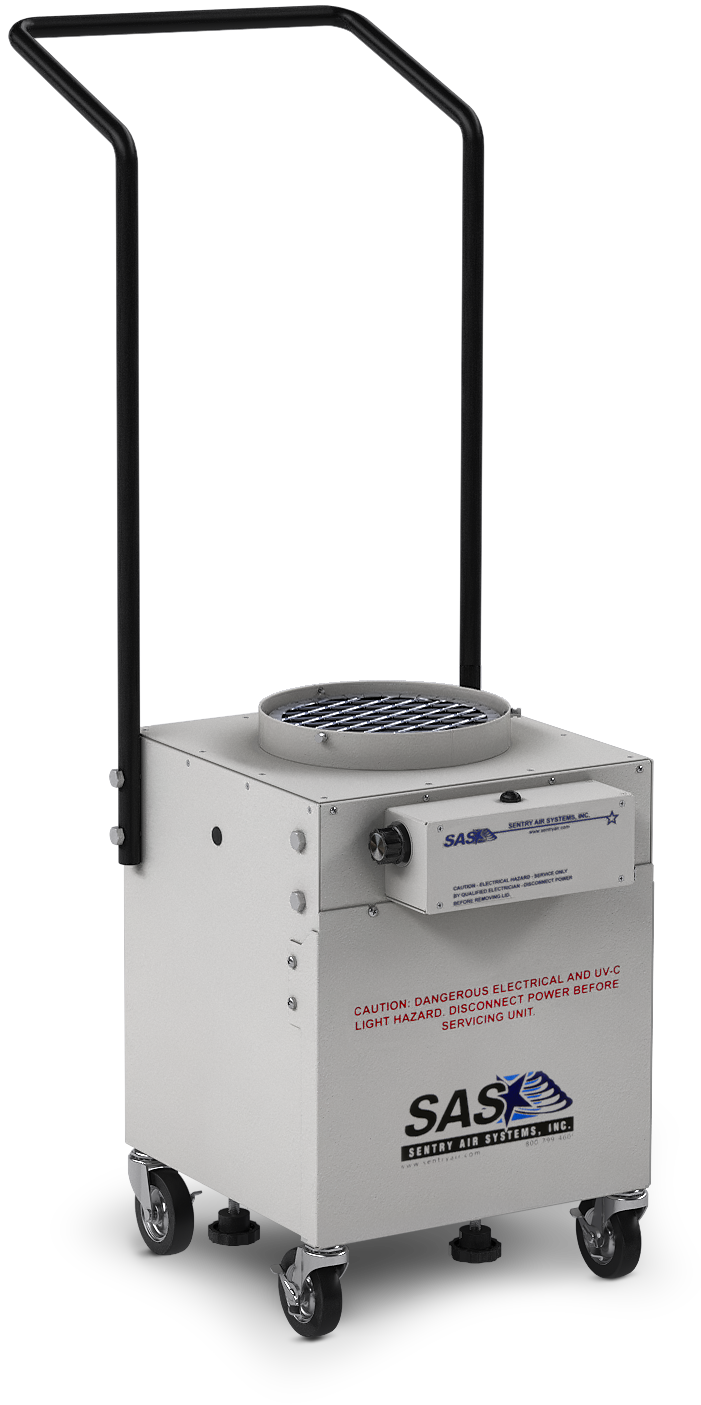 SS-300-PRAC-UVC |
|
| CFM | Up to 350 CFM |
| Size (L x W x H) |
15.5” x 13” x 10.5” |
| Sound Level | 58 to 66 dba |
| Construction | Carbon Steel |
| Filters | HEPA or ULPA |
Industrial UVC Air Cleaners
For large areas seeking UVC light air disinfection, the Germ Killer UVC offers a powerful solution. This system draws in air through a pre-filter and then exposes it to 2 powerful UVC lights. The Germ Killer UVC uses proprietary technology to ultra-magnify the UVC light dose to disinfect the air. Lastly, the air passes through a post-filter and releases the cleaned air back into the surrounding room. An adjustable airflow control allows the operator to change the airflow from 200 CFM to 300 CFM or 400 CFM. This robust system is best suited for high-traffic areas, conference rooms, large shared workspaces, and more.
 GK-UVC400 |
|
| CFM | Adjustable to 200, 300, and 400 CFM |
| Size (L x W x H) |
52.5” x 16” x 12” |
| Sound Level | 62 dba |
| Construction | Stainless Steel 316 |
| Filters | Washable Pre-Filter & Post-Filter |
Implement HEPA and UVC Air Cleaners to help protect your workforce from COVID transmission and feel safe returning to the office.
Call us today at 1-800-799-4609
Related Blogs
• COVID-19 Air Filtration Solutions for Schools
• Potential Tools to Help Protect Against the Coronavirus (COVID-19)
Sources
1. “Ventilation in Buildings.” Centers for Disease Control and Prevention, 2 June 2021, https://www.cdc.gov/coronavirus/2019-ncov/community/ventilation.html.
2. “Roadmap to Improve and Ensure Good Indoor Ventilation in the Context of COVID-19.” World Health Organization. 1 March 2021, https://www.who.int/publications/i/item/9789240021280.
3. “Preventing the Spread of COVID-19 By Circulating Air in Schools and Other Buildings.” Rhode Island Department of Health: COVID-19 Information. 23 Nov 2021, https://covid.ri.gov/covid-19-prevention/indoor-air-circulation
4. Lindsley, W.; Derk, R.; Coyle, J.; Martin Jr., S.; Mead, K.; Blachere, F.; … Noti, J. “Efficacy of Portable Air Cleaners and Masking for Reducing Indoor Exposure to Simulated Exhaled SARS-CoV-2 Aerosols – United States, 2021.” Centers for Disease Control and Prevention, 9 July 2021, https://www.cdc.gov/mmwr/volumes/70/wr/mm7027e1.htm.
5. “Guidance for Airflow, Ventilation, and Air Filtration.” Rhode Island Department of Health: COVID-19 Information. 19 Nov 2021, https://health.ri.gov/publications/guidance/Airflow-Ventilation-and-Air-Filtration-Guidance.pdf.
6. “WHO’s Science in 5 on COVID-19 – Ventilation – 30 October 2020.” YouTube video retrieved from: https://youtu.be/XJC1f7F4qtc. 30 Oct 2020.
7. “MAD+ Policy Guide: COVID Straight Talk Lab, a Last Mile Project.” New York Committee for Occupational Safety and Health (NYCOSH). 14 Dec 2021, https://covidstraighttalk.org/mad-policyguide.
8. Heisler, Yoni. “Dr. Fauci says putting one of these in your home can help stop the coronavirus.” BGR. 8 March 2021, https://bgr.com/2021/03/08/covid-update-fauci-hepa-filter-coronavirus-safety/.
9. “How UV Light is Used in Air Purification.” Oransi. https://oransi.com/blogs/blog/uv-light.

 Made in the USA
Made in the USA
